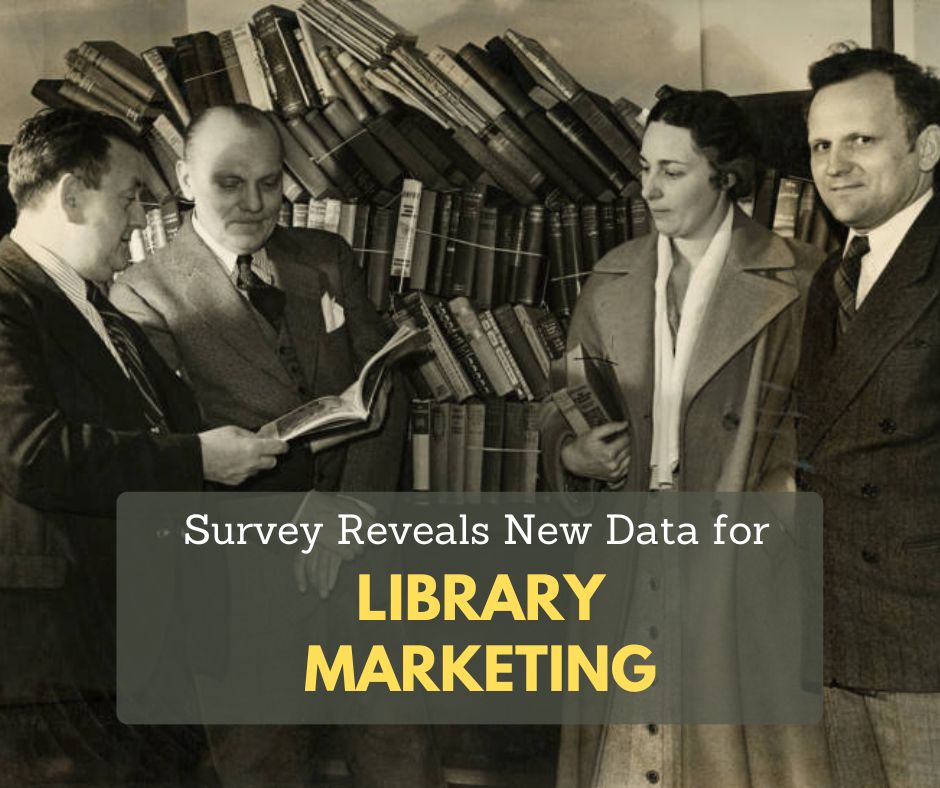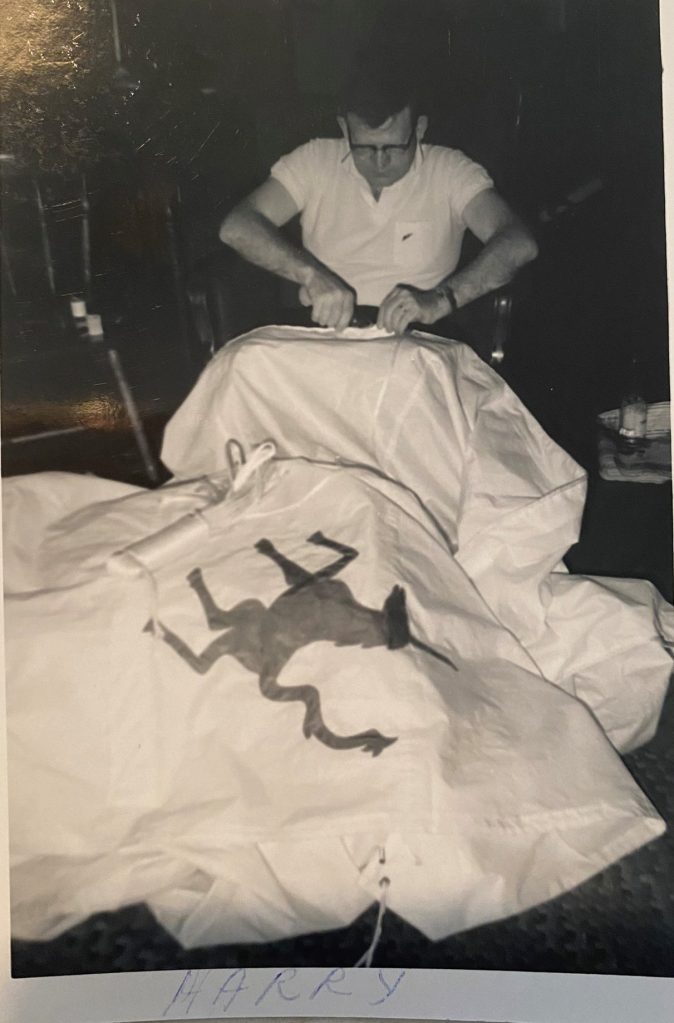
You asked for it and this week, I’m sharing the results of the latest Super Library Marketing Survey.
Surveys are an effective form of market research. They illuminate the services that are needed to help a target audience. And you, my dear readers, are my target audience.
For the past 8 years, I’ve asked questions that help me get a better sense of who you are, and how this blog and The Library Marketing Show can be as helpful to you as possible. The Monday posts and Wednesday videos are direct responses to the questions and concerns you share in the survey.
The struggles and goals of libraries shifted in some major ways. As we begin 2024, here is the state of library marketing.
Basic methodology
The survey was conducted for two weeks in early September 2023. The survey response rate rose this year by a whopping 32 percent. The survey was a mix of multiple-choice and open-ended questions.
Type of library
Respondents to the survey consist mainly of public library workers.
- 86.6 percent of respondents work in a public library.
- 7.1 percent work in an academic library.
- The remaining 6.3 percent of respondents work in school, special, or state libraries.
Marketing experience
Most of the respondents are experienced marketers.
- 69.3 percent of respondents say they’ve been managing promotions for 3 years or longer.
- 19.7 percent have been doing marketing for 1-2 years.
- The remaining 11 percent said they have been in promotions for less than 12 months.
Time spent on library marketing
The average respondent estimated they spent about 60 percent of their daily work time on marketing and promotions. This means that many of you are also managing other job duties, such as programming and collection development.
Marketing as a priority
Every year, I ask respondents to tell me if their library has a dedicated marketing department. A marketing department can consist of one or more people, whose sole job role is marketing. The presence of a marketing department is a clear indication of whether marketing is a priority for senior leaders.
This year, the results were:
- 50.4 percent said no.
- 49.6 percent said yes.
The number of libraries with a dedicated marketing department fell two percentage points this year. That’s not enough to call it a trend but I will keep an eye on this.
The most pressing question or concern
Last year, the top concerns of my readers were how to reach new users, storytelling for marketing, email marketing best practices, and budgeting.
This year, the answers can be broken down by five categories.
How to reach new users
Respondents said they struggled to promote to community members through traditional means, like newspapers, as well as on social media. Several named specific target audiences they hope to reach, including young adults, parents and caregivers of young children, and non-English speaking communities.
One respondent said, “How do we make sure we are effectively reaching patrons and members of the community without overdoing it or over-communicating? I am a one-person marketing team for my library.”
Time
Respondents shared frustration over a lack of time to adequately plan, create, and analyze their marketing. They struggle with the coordination of tasks, especially when working with other library staff. Balancing priorities and goals is difficult.
Said one respondent, “We’re a progressive system that’s constantly adding new things (which is great) but it seems like there’s never enough time or space to share it all and get real awareness out there.”
Buy-in and strategy
Many of the respondents said they are struggling to get supervisors and co-workers to understand their jobs: the difficult parts of marketing, the time this work takes, and the value of doing it right.
“There are not enough marketers for everything Admin wants us to do,” said one respondent. “Others don’t understand how many priorities we’re trying to balance or how time-consuming our work is. I feel like some coworkers think we’re doing our jobs badly, but they don’t understand our jobs.”
Another respondent asked, “How can I best unify staff? My biggest challenge is encouraging everyone to follow our style guide or at least inform themselves about marketing best practices.”
Social media
Respondents shared frustration with changing social media algorithms and the burnout that can happen. “They’re showing more Reels, then they are showing still pictures, then they aren’t showing unless there are comments…you know what I mean?” asked one respondent.
Other concerns
Content creation, audience segmentation, reaching volunteers, burnout, budgeting, metrics, competing with nearby libraries for attention, and AI all round out the list of concerns this year for library marketers.
These topics will all be addressed this year.
Social media use
Here is the percentage of libraries using specific social media platforms, according to the survey respondents. Of note was the jump in Facebook and Instagram use this year, as many libraries moved away from Twitter/X.
- Facebook: 97 percent
- Instagram: 92 percent
- YouTube: 54 percent
- Twitter/X: 38 percent
- LinkedIn: 21 percent
- TikTok: 16 percent
- Pinterest: 9 percent
- Threads: 6 percent
In the open-ended questions, many of you said you rely on this blog for social media news and analysis. And I will continue to provide that this year.
However, I have made the decision not to promote the blog on Twitter/X anymore and will not cover any best practices for that platform this year, unless something drastic changes.
Email marketing
I asked my respondents how often their library sends promotional emails.
The big takeaway: more of you are sending emails. Only 9 percent of respondents said their library doesn’t send any email at all. That’s down ten percentage points from 2022!
Here is how the rest of the sending breaks down:
- Once a month: 38 percent
- Once a week: 36 percent
- Several times a week: 12 percent
The most important library goals
Last year, I asked respondents if they set goals. This year, I got more specific. I asked respondents to check all that applied. Here is how the results break down.
- Driving visitors to your physical location, website, or catalog: 76 percent.
- Increasing program attendance: 67 percent.
- Reaching non-patrons: 63 percent.
- Getting current cardholders to use the library more often: 60 percent.
- Driving the use of services like databases, Makerspace, Library of Things, etc.: 57 percent.
- Advocating for the freedom to read: 18 percent.
Facing book challenges
This year, I added a question asking respondents if they’d faced a book challenge in the past 12 months.
- 55 percent said no.
- 30 percent said yes.
- 15 percent were not certain.
And though most readers said they hadn’t been targeted; this issue does loom large over the work you are doing for promotions.
“Our library is choosing to keep our head down on the book-banning issue, hoping no one will notice or bring it up,” reports one respondent.
Says another, “We’ve had to be careful about how we promote everything. For example, we used to hand out these fun rainbow-colored pens to kids but stopped because we were called groomers during the book challenges. We have also been having a rash of bomb threats to the libraries in our area which has also affected the feeling of security with our staff. I feel like my job is less about promoting programs and services and more about crisis management these days and how to communicate feelings of safety etc. This is not something I was really trained to do so it can feel overwhelming.”
More changes for Super Library Marketing this year
Readers asked for posts about how to create interactive and impactful community presentations to outside groups and tips for print promotions. I’ll cover these in the next year.
Some want the videos to be released as podcasts on Spotify. I will consider that if time and money allow.
Many of you requested more advanced subject matter in the blog posts and videos. I will try to do more of that this year.
I’m also hoping to more profile school libraries and special libraries this year. Do you work at a school or special library and have a library marketing success story to share? Contact me here.
I always try to share tips and strategies for library marketers who wear multiple hats, and that will continue in 2024.
Finally, someone asked for subtitles for the videos. This year, I started providing captions for all my videos on YouTube and LinkedIn. Click the “CC” icon on the screen to see the captions.

PS Want more help?
How to Create an Effective Library Survey to Pinpoint the Needs of Your Community
Subscribe to this blog and you’ll receive an email whenever I post. To do that, enter your email address and click on the “Follow” button in the lower left-hand corner of the page. You can also follow me on the following social media platforms:







